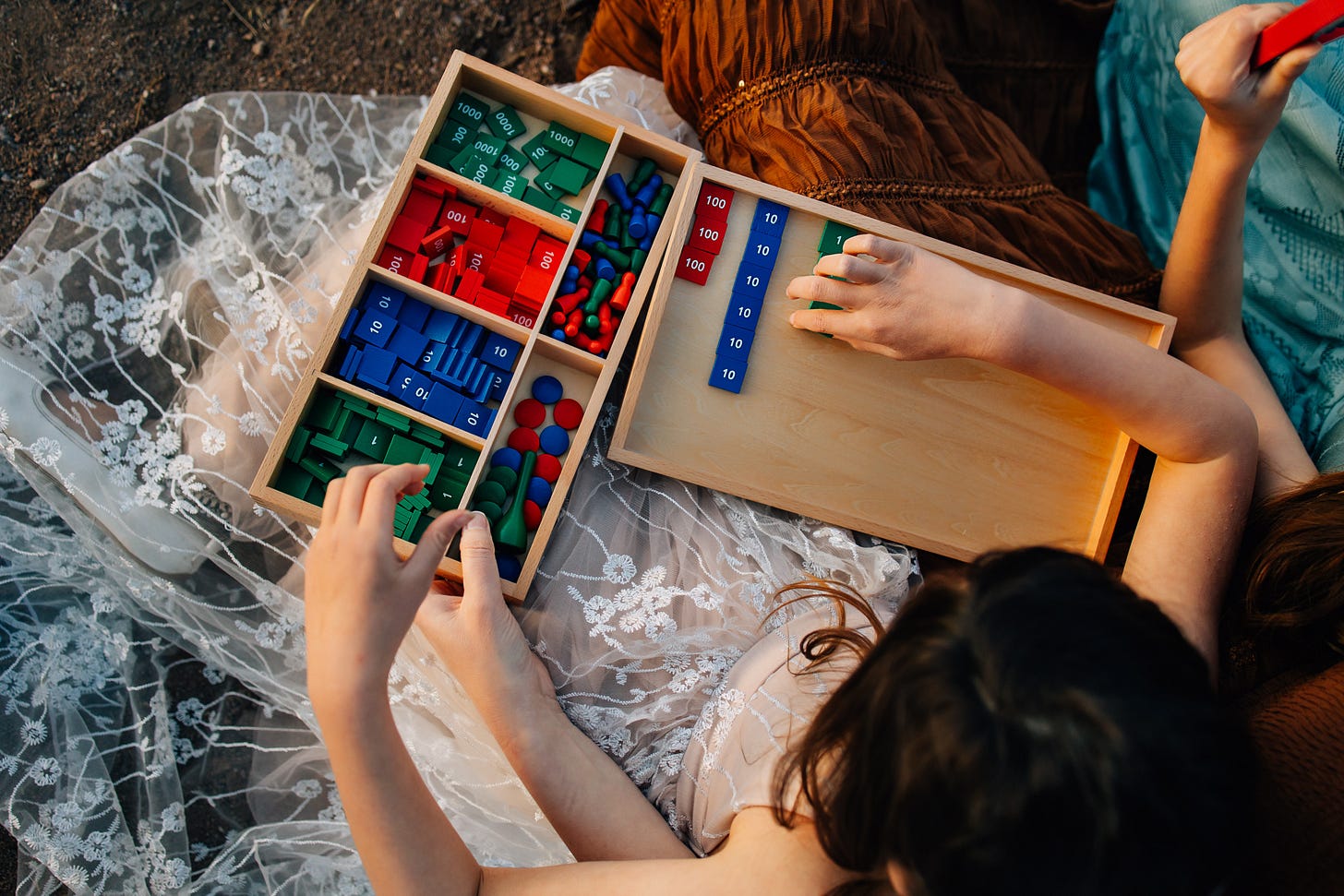✨Improve Your Kid’s Math Without Doing Math
Unlock your child’s math potential using proven brain-training games and activities
✨What if I told you, you could help your child get better at math - without doing math?
Not only that - but it’d be delightful.
Before we get there, I have to explain something wild about how your brain does math.
To your brain, math is visual.
You read that right → VISUAL. Technically, it’s visuospatial.
Let me explain.
Visual is processing images or patterns; while spatial means handling locations or sequences. Together, this means that your brain thinks of math as objects or patterns in different places or sequences.
Math savants will tell you that they “see” the math. They universally use this term. Moreover, there are some people with specialized brains that can look at objects on the floor and count them instantaneously into the hundreds.
Most of you aren’t math savants (I’m not either). You also probably don’t think you “see” math, but you do. How many birds are in the picture below?
Did you count them 1, 2, 3 - or did you just know there were 3. Most of us can only do this trick up to 5, but you can still easily look at the picture below and tell me which has more tulips. You didn’t count them, you visualized them spatially and just knew.
The parts of your brain that manage visual information evolved into the parts of your brain that manage math - because math is so physical.
Your brain also stores numbers spatially. I want you to imagine the numbers 5 and 50. Now put the 5 in one hand and the 50 in the other. Most of you put the 5 in your left hand and the 50 in your right hand. That’s because you have a spatial representation of numbers in your mind.
Cool right? Now, if you were raised in a culture that writes right-to-left, you put the 5 in your right hand. This means that the direction of spatial orientation is not innate, but trained - but spatial orientation exists in everyone’s mind regardless of culture.
You’re probably thinking that’s cool Claire but why should I care about this?
You should care because children’s visuospatial working memory - the ability to hold and manipulate visual and spatial information - is highly correlated to math ability.
It’s not just related to the ability to do numerical operations (think addition/subtraction) but also math reasoning (think story problems).
Visuospatial working memory predicts math ability from preschool to high school, and even mathematical reasoning and geometry in adults.
Lack of these skills also predicts math difficulty - including dyscalculia.
Side note: Dyscalculia and dyslexia commonly occur together so if you have a child with dyslexia it’s worth getting them tested for dyscalculia too.
But most importantly👇
Training visuospatial tasks improves math ability!
Not only that, the training is delightful!
But, not all visuospatial tasks are created equal. First, let’s talk about the ones you need to train, and then I’ll give you a handy list - by age - to help your kids crush math.
There are two types of visuospatial tasks that are particularly important to math skills.
Visuospatial manipulation → Examples: Tetris, using an upside down map, navigating a parking lot
Spatial-Sequencing → Examples: Building/construction, dance choreography, sports
These two categories work together - manipulation builds the mental models of space, and sequencing keeps them in order. Train both, and you’re giving your child the mental architecture math thrives on.
Kids who can picture things in their minds and remember the order of steps have a big advantage in math.
These “mind’s eye” skills make it easier to understand shapes, patterns, and how things fit together. The good news? You can grow these skills through simple, playful activities—no worksheets required. Here’s an guide for kids, aged 3-18, you can use at home
✨Games & Activities That Build a Strong Math Brain👇
This part is just for my favorite people. If you want more for your kids, join our community of 3,000+ parents giving their children not just a great education, but a truly remarkable life.♥️





